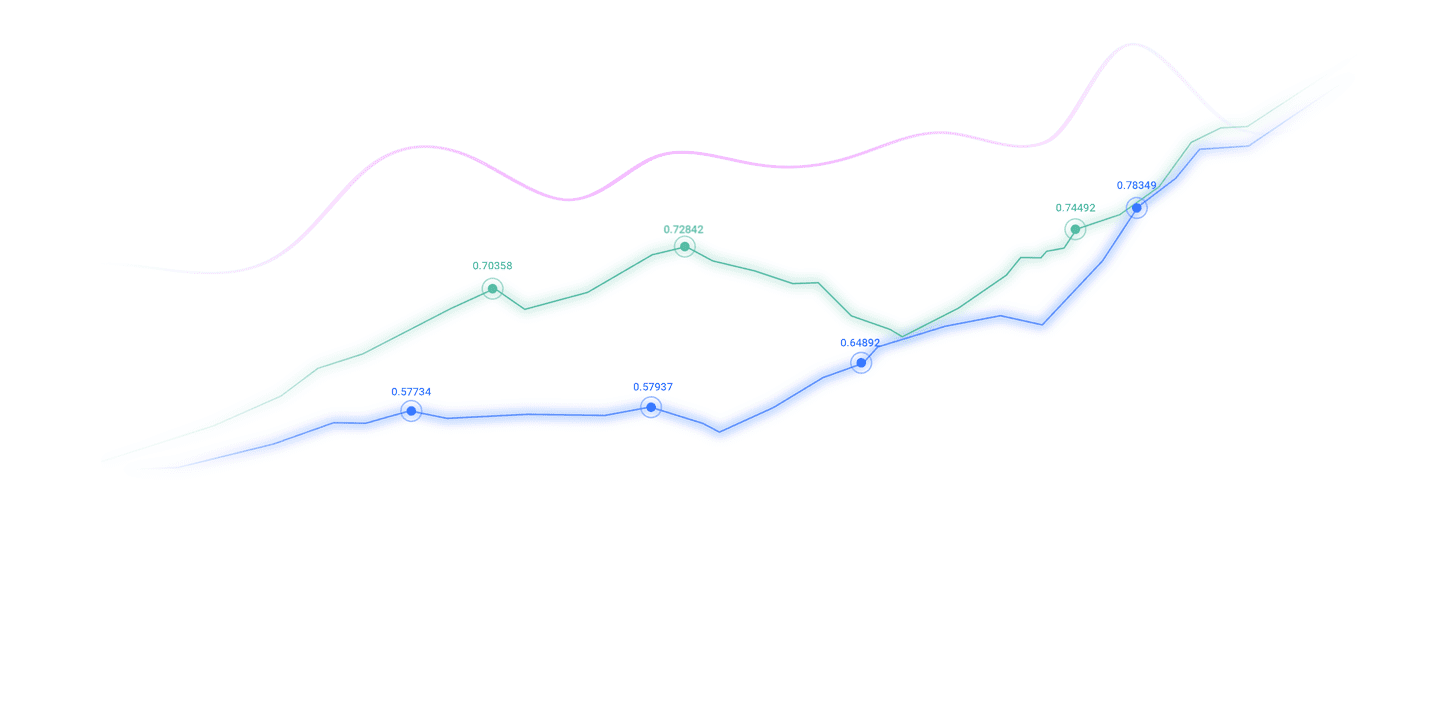Trusted by over 15 Million Traders
The Most Awarded Broker
for a Reason
CATEGORIES
News
- Powell hits five-week highs after criminal charges from Trump allies, stimulatin
- Gold is above 3508, continue to watch the trend rise and break high
- Gold is taking advantage of the non-agricultural growth?
- The US dollar index is about to break the position, Shanghai copper is long and
- The daily line is strong and the sun is rushing to the upper track, and gold and
market news
A collection of positive and negative news that affects the foreign exchange market
Wonderful introduction:
Optimism is the line of egrets that are straight up to the blue sky, optimism is the thousands of white sails beside the sunken boat, optimism is the lush grass that blows with the wind on the head of the parrot island, optimism is the falling red spots that turn into spring mud to protect the flowers.
Hello everyone, today XM Foreign Exchange will bring you "【XM Foreign Exchange Official Website】: Collection of positive and negative news that affects the foreign exchange market". Hope it will be helpful to you! The original content is as follows:
In the foreign exchange market, various news moves like a weather vane, always controlling the trend of currency and investors' decisions. On September 22, before entering the trading battlefield, it is necessary for investors to sort out the important positive and negative news that have affected the foreign exchange market in the near future, so as to accurately grasp the pulse of the market.
1. Good news
(I) China's foreign exchange reserves hit a new high, with significant economic resilience support
The State Administration of Foreign Exchange released data on September 7. As of the end of August 2025, China's foreign exchange reserves were US$3322.2 billion, and after the end of June, it once again stood at the 3.3 trillion US dollar mark, setting a new high in the past 10 years. Behind this data, it reflects the good trend of China's economic operation being stable and progressive. From the structural perspective, the August incremental volume showed double support of "foreign exchange + gold". Affected by weaker than expected US employment data, the market's expectations for the Federal Reserve's interest rate cuts have risen, the US dollar index has fallen, and the valuation of non-US dollar assets in my country's foreign exchange reserves has risen accordingly. In addition, the weak US dollar has promoted the appreciation of the RMB exchange rate, driving foreign trade xn--xm-6d1dw86k.companies to increase their willingness to settle foreign exchange and overseas investors to increase their holdings of Chinese assets. The stable growth of the scale of foreign exchange reserves not only strengthens the market's confidence in the RMB, but also provides a solid support for the RMB exchange rate in the foreign exchange market, and to a certain extent promotes the RMB to strengthen in international currency exchange.
(II) The Federal Reserve cut interest rates, and the global capital flow pattern is reshaped
On September 17, local time, the Federal Reserve ended its monetary policy meeting and decided to lower the target range of the federal funds rate by 25 basis points to between 4.00% and 4.25%. This is the first rate cut since December 2024. As soon as the news came out, the US dollar index fell back. US dollar as the world's major reserveThe lower interest rate of currency has reduced the returns of holding US dollars, prompting international capital to seek new investment directions. This is a big benefit for emerging market currencies. Taking the RMB as an example, the weakening of the US dollar has driven the RMB to show a stronger trend against the US dollar. As of August, banks had a surplus of foreign exchange settlement and sales for four consecutive months, and cross-border income and expenditure of non-bank sectors such as enterprises and individuals were basically balanced, and my country's foreign exchange market maintained a stable operation. According to the report of the International Finance Association (IIF), foreign investors invested nearly US$45 billion in emerging market stock and bond portfolios in August, of which about US$39 billion was net in China. The large inflow of foreign capital further enhanced the attractiveness of RMB assets, driving the increase in RMB demand in foreign exchange transactions and rising prices.
(III) China deepens the reform of foreign exchange management in cross-border investment and financing
The State Administration of Foreign Exchange recently issued the "Notice of the State Administration of Foreign Exchange on Deepening the Reform of Foreign Exchange Management in Cross-border Investment and Financing". In terms of foreign exchange management in cross-border investment, the registration of basic information on the preliminary expenses of foreign direct investment, domestic reinvestment registration of foreign-invested enterprises, etc., allowing foreign exchange profits under foreign direct investment to be reinvested domestically, and expanding the scope of the "Kahuitong" policy. In the reform of cross-border financing foreign exchange management, the scope of cross-border financing facilitation will be expanded, the facilitation quota of related enterprises will be increased, and the registration management requirements will be simplified. In terms of capital project income payment facilitation policy, we will reduce the negative list and optimize payment management. These reform measures have greatly improved the convenience of cross-border investment and financing, attracted more foreign capital to flow into the Chinese market, increased the demand for the RMB, provided strong support for the RMB exchange rate, and enhanced the xn--xm-6d1dw86k.competitiveness of the RMB in the foreign exchange market.
2. Negative news
(I) US trade policy impacts emerging market currencies
U.S. President Trump previously signed an executive order to adjust the trade policies of some countries. For example, various metals such as gold, tungsten, uranium and other metals and graphite are exempted from the global tariff system, and silicon products are included in the tax list. The uncertainty of trade policies has exacerbated the instability of the global economy. For some emerging market countries that rely heavily on exports to the United States, their currencies are under tremendous pressure. Taking India as an example, the United States imposed high tariffs on Indian goods imported to the United States, causing the Indian rupee to continue to fall. Since the beginning of the year, the US dollar/Indian rupee has risen by 3%, becoming one of the worst performing major currencies in Asia. Although the Bank of India has intervened, its efforts are limited. High tariffs are expected to severely impact key industries for India's labor-intensive SMEs, accounting for more than half of India's total annual exports to the United States. A country currency like India, which is impacted by US trade policies, has performed weakly in the foreign exchange market and is facing the risk of depreciation.
(II) The slowdown in global economic growth has suppressed monetary demand
The trend of global economic growth slowing down has become increasingly obvious in recent years. The construction of single-family houses in the United States fell to a multi-year low in August, with a serious backlog of unsold inventory, and some European countries' economic growth was weak, and emerging economies were also facing pressure to adjust economic structure to varying degrees. Economic growthThe weakness has weakened the demand for xn--xm-6d1dw86k.commodities from enterprises and consumers, which in turn affects the demand for trade-related monetary matters. For example, xn--xm-6d1dw86k.commodity currencies such as the Australian dollar and Canadian dollar have their exchange rate trends closely linked to xn--xm-6d1dw86k.commodity prices. As the global economic growth prospects are unclear, xn--xm-6d1dw86k.commodity prices have fallen, resulting in lower export incomes in these countries and lower demand for currency. In the foreign exchange market, currencies such as the Australian dollar and Canadian dollar are facing downward pressure.
(III) Geopolitical tensions interfere with the foreign exchange market
The geopolitical situation continues to be tense, and the humanitarian crisis in Gaza continues to deteriorate. British Prime Minister Stamer announced that he would hold an emergency meeting with French and German leaders to discuss ways to alleviate the crisis. As an important global crude oil producing area, the instability of the Middle East has intensified market concerns about the stability of crude oil supply. The rise in geopolitical risks has caused the market to heat up risk aversion sentiment, and investors are looking for safe-haven assets, such as the US dollar and the Japanese yen, to be favored. Some currencies with more important links to geopolitical risks, such as currencies in some Middle East countries, or currencies with greater geopolitical influence due to their economic structure, face selling pressure in foreign exchange market transactions, exchange rate fluctuations are intensifying and overall depreciation trends.
The above content is all about "【XM Forex Official Website】: Collection of Positive and Negative News that Influence the Foreign Exchange Market". It was carefully xn--xm-6d1dw86k.compiled and edited by the XM Forex editor. I hope it will be helpful to your trading! Thanks for the support!
Life in the present, don’t waste your current life in missing the past or looking forward to the future.
Disclaimers: XM Group only provides execution services and access permissions for online trading platforms, and allows individuals to view and/or use the website or the content provided on the website, but has no intention of making any changes or extensions, nor will it change or extend its services and access permissions. All access and usage permissions will be subject to the following terms and conditions: (i) Terms and conditions; (ii) Risk warning; And (iii) a complete disclaimer. Please note that all information provided on the website is for general informational purposes only. In addition, the content of all XM online trading platforms does not constitute, and cannot be used for any unauthorized financial market trading invitations and/or invitations. Financial market transactions pose significant risks to your investment capital.
All materials published on online trading platforms are only intended for educational/informational purposes and do not include or should be considered for financial, investment tax, or trading related consulting and advice, or transaction price records, or any financial product or non invitation related trading offers or invitations.
All content provided by XM and third-party suppliers on this website, including opinions, news, research, analysis, prices, other information, and third-party website links, remains unchanged and is provided as general market commentary rather than investment advice. All materials published on online trading platforms are only for educational/informational purposes and do not include or should be considered as applicable to financial, investment tax, or trading related advice and recommendations, or transaction price records, or any financial product or non invitation related financial offers or invitations. Please ensure that you have read and fully understood the information on XM's non independent investment research tips and risk warnings. For more details, please click here


































































































